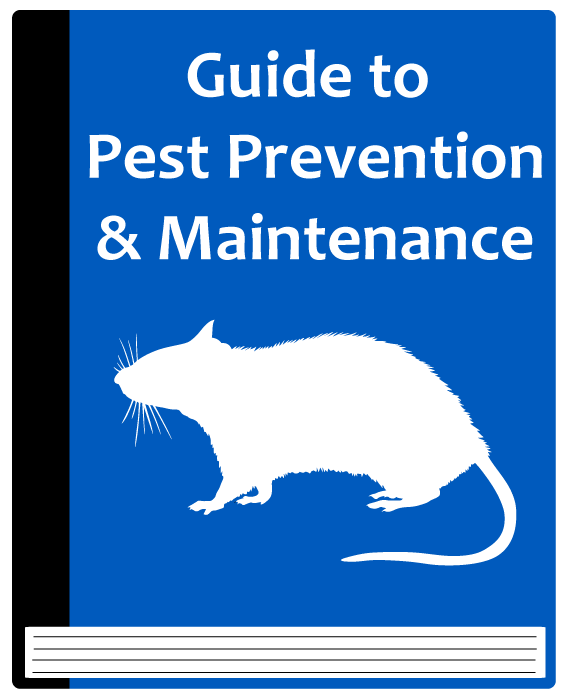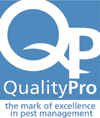One of the main responsibilities of commercial property owners and managers is to maintain a safe and comfortable environment for their tenants. By maintaining your property, you can prevent costly future repairs that will impact both your occupants and your bottom line.
A systematic inspection for possible pest infestation should be at the top of all property managers’ maintenance list. Commercial facilities provide all the elements necessary for pests to invade and survive: food, water, and optimal temperatures. Ants, flies, mosquitoes, cockroaches, bees, wasps, mice and other rodents are always looking for hiding places, and once they find a way into your building, it is difficult and costly to get rid of them.
Proactive Pest Control Management For Commercial Properties
Implementing a proactive pest control program reduces the chances of an infestation escalating out of control and over budget. A successful pest management program depends on a strong partnership between the building’s management, occupants, and a pest control professional. Effective communication between management, the maintenance staff, and occupants is the key to success in any pest control program. Ask staff and tenants to do their part by keeping kitchens, break rooms, community areas, and cubicles clean of food and discarded trash and to report problems to the management office.
Pest infestation is not only a serious health hazard, but pests can also do structural damage to buildings. This especially applies to schools, restaurants, and medical facilities and if hygienic standards are not kept up your business could be impacted in a very serious way. Customers and clients will not patronize a business with known pest control issues.
Facility Management Tips To Keep Pests Out
- Inspect the building’s façade and utility pipes for cracks
- Add weather stripping, and door sweeps around gaps
- Install window screens and replace torn or missing ones
- Install specially designed screens over building weep holes, the small openings left in outer walls as an outlet for water inside the building
- Make sure the occupants are disposing of their trash in the proper areas
- Place dumpsters at least 15-20 feet away from the building
- Cut back landscaping near entrances and exits to the building and keep trees and shrubs three feet from the building. Rodents live in thick vegetation.
- Keep common areas like kitchens, community rooms, laundry rooms, storage closets, pool-side areas, and parking lots clean and free of food
Top Pest Offenders & Their Risk To Property Managers
With a large number of people coming in and out of commercial buildings every day it is difficult to pin down the origin of infestations. The top pest offenders are:
Rodents
- Mice and rats invade over 20 million homes each year
- They carry diseases such as Hantavirus, Hemorrhagic Fever with Renal Syndrome, Leptospirosis, and plague.
- They chew wires that can cause fires
- They build nests in buildings and may cause structural damage
- Hotspots in kitchens, attics, storage areas
Ticks
- They carry Lyme Disease
- Approximately 30,000 cases are reported to CDC each year
- Found in brush and overgrown areas outdoors
Bed Bugs
- Found in beds, cracks in furniture or any type of textile, including upholstered furniture
- Bed bugs can live and thrive in clean environments as well as dirty ones
- Can be carried in and out of building in clothing
- Possible lawsuit
Cockroaches
- They trigger allergies and asthma attacks
- Contaminate food with bacteria that causes vomiting and severe food poisoning
- They multiply at lightning speed
- Water accumulation primary cause of infestation
Flies
- Keep loading docks, and public doors closed at all times
- Install special screens or vinyl curtains over these doors to keep flying insects from coming in
- Install fly lights inside entrances and near waste disposal areas. Ultraviolet light attracts flies into a non-toxic sticky unit, but before doing this, be sure to consult your pest management professional about the best placement as improperly placed fly lights can create a bigger problem
Commercial facility managers have a responsibility to their occupants and their property by maintaining a healthy and safe environment for everyone. Tenants have a choice when they are looking to rent office space or living quarters and your reputation as an eco-friendly facility can work in your favor. Possible clients or tenants may want to know what your LEED Certification Label is before making the decision to rent in your building.
The certification program called LEED, Leadership in Energy and Environmental Design, is an internationally recognized program that is currently deployed in more than thirty countries. LEED Certification is based on points earned by the design, environmental health, and energy-efficiency of the building. Because LEED Certification standards cover indoor air quality, pest management is a required characteristic in earning this label. Commercial management companies might consider investing in an Integrated Pest Management (IPM) program which will adhere to the LEED guidelines.
Integrated Pest Management (IPM)
An Integrated Pest Management Program (IPM) is an ecosystem-based strategy that focuses on exclusion, inspection, surveillance, and prevention and not just treatment alone. An IPM program places limits on pest control materials while focusing on proactive prevention and education. Pesticides are used only when needed and must adhere to established guidelines that minimize the risk to either human or environmental concerns.
The six major components common to all IPM programs are:
- Pest Identification
- Assessing pest numbers and the damage done
- Guidelines for when management action is needed
- Preventing pest problems
- Implementing a combination of biological, physical, cultural, and chemical management tools
- Monitoring the effect of pest management
To earn IPM credit, LEED project teams must:
- Develop, implement, and maintain an IPM plan
- Use the least toxic chemical pesticides
- Ensure minimum use of the least toxic pesticides
- Apply least toxic pesticides only in targeted locations
- Apply least toxic pesticides only to targeted pest species
- Identify what constitutes an emergency application of pesticides
- Develop a communications strategy for both normal and emergency conditions
When looking for a qualified pest management provider, ask your industry peers for recommendations. Questions to ask potential pest control providers are:
- How long have they been in business?
- Are they licensed and or certified by the appropriate agencies?
- Does the provider specialize in commercial pest control?
- Can the provider tailor a program that suits your facility’s needs?
- Are they a member of state and national pest control associations?
- Do they have a service guarantee and what type of documentation is provided?
- Ask them to conduct an inspection
It is beneficial for both commercial property managers and their tenants when a proactive pest control program is put in place. Effective communication between management and your occupants can benefit you both by sustaining the structure, health, and long-life of your property.
High Quality Pest Control For Commercial Properties
If you’re looking for a reliable pest and wildlife control company to keep your commercial properties rodent, pest and wildlife-free, contact the professionals at Abra Kadabra Environmental Services today! We have the experience, training and equipment necessary to take care of all of your pest removal needs in the Twin Cities, MN area.







